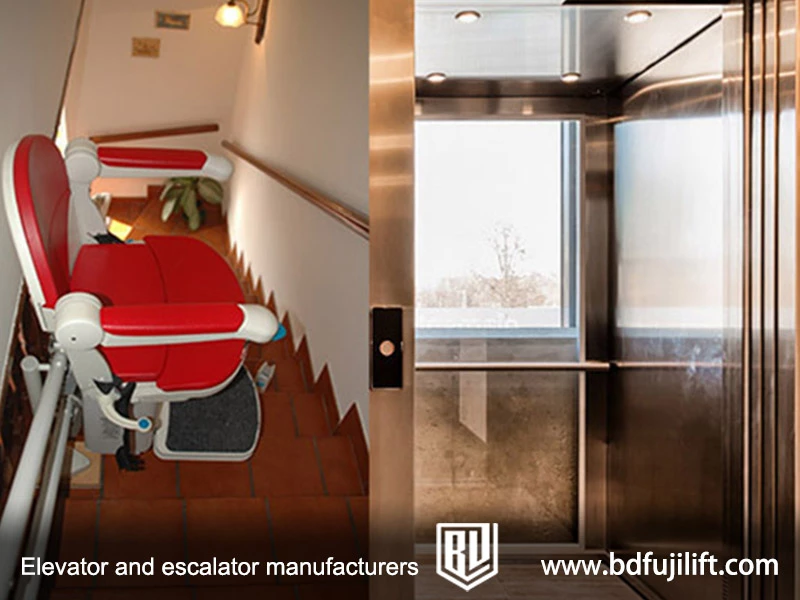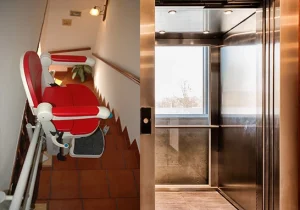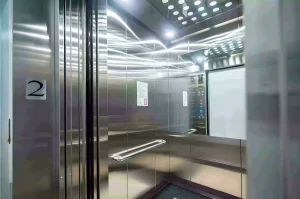Stair lifts and elevators are two popular options to help people move between floors in their homes. They are both useful, but they work in different ways. Stair lifts are designed to move people up and down stairs, while elevators are vertical lifts that carry people between floors. Both can make a home more accessible, but which one you need depends on your space, budget, and how often you’ll use it. Let’s take a closer look at both options.
Main Differences Between Stair Lifts and Elevators
Stair lifts and elevators are both useful tools to help people move between floors, but they work in different ways. A stair lift is a chair that moves up and down along a rail attached to your stairs. It’s a great option if you have stairs in your home and want an easy way to go up and down without much effort. Elevators, , are like small rooms or platforms that move up and down in a shaft. They are typically used for homes with many floors where you want a more permanent solution to move between levels.
The main difference between the two is how they work:
-
Stair Lifts only move a person up and down the stairs, using a motorized chair. They take up less space and are easier to install.
-
Elevators move vertically between floors and need a lot more space to install, including a shaft. They are larger and more expensive but offer more convenience and comfort.
Another difference is the cost. Stair lifts are usually cheaper to install and maintain, while elevators can be much more expensive because of the space and work required to install them. Stair lifts are great for smaller homes or if you don’t need to move large items, while elevators are better for larger homes or people who want a long-term solution.
How Stair Lifts and Elevators Work
How Stair Lifts Work
A stair lift is a chair that can move up and down stairs. It usually looks like this:
It is usually attached to a rail along one side of the staircase and looks like a chair hanging in mid-air. To use it, you just sit in the chair and press a button. The chair moves along the rail, helping you go up or down the stairs with little effort. Some stair lifts come with a remote control, so you can move the chair from a distance. The chair is designed to fold up when not in use, so it doesn’t block the stairs. It is easy to install, takes up little space, and works on both straight and curved staircases.
How Elevators Work
An elevator is a machine that moves people or things up and down between floors in a building. It works using a system of cables, pulleys, and a motor. The elevator car is attached to cables that are connected to a motor at the top of the elevator shaft. When you press a button to choose a floor, the motor turns on and moves the cables, which makes the elevator car go up or down.
The elevator moves smoothly because the motor controls the speed and stops at the correct floor. The system also uses safety features like brakes to make sure the elevator doesn’t fall if something goes wrong. The car is usually inside a shaft, which is like a tall box, and it moves along rails to stay in place and not sway.
Price Comparison: Stair Lifts vs. Elevators
| Cost Factor | Stair Lifts | Elevators |
|---|---|---|
| Average Equipment Price | $2,000 – $5,000 | $15,000 – $30,000 |
| Installation Price | $1,000 – $3,000 | $10,000 – $25,000 |
| Daily Usage Costs | Low (minimal energy consumption) | Higher (more energy used) |
| Maintenance Price | Low (minimal maintenance required) | Moderate to high (regular servicing needed) |
Stair lifts generally offer a lower upfront cost and are ideal for smaller homes or for occasional use. However, elevators come with a higher initial cost but provide greater capacity, comfort, and long-term benefits, especially for larger homes or those with specific needs.
Stair Lifts and Elevators: Selection Guide
Choosing between a stair lift and an elevator depends on several important factors, including space, budget, and how often you need to move between floors. Below are some helpful guidelines to help you decide which option is best for your home.
When to Choose a Stair Lift
A stair lift is usually the best choice if:
-
You have a narrow staircase: Stair lifts are smaller and can fit easily on most stairs.
-
You need a budget-friendly option: Stair lifts are generally cheaper to install and maintain compared to elevators.
-
You don’t need to carry large items: Stair lifts are great for helping people move between floors, but they can’t carry heavy loads or many people like an elevator.
-
You have limited space: Stair lifts take up less room and don’t need major changes to your home.
When to Choose an Elevator
An elevator might be a better choice if:
-
You have more space: Elevators need more room for installation, including a shaft and extra space for the equipment.
-
You want a long-term solution: Elevators are more durable and often a better option for multi-story homes.
-
You need to carry heavy or bulky items: Elevators can hold more weight and are better for carrying goods, furniture, or many people.
-
You want added convenience: Elevators provide more comfort and are perfect for people with mobility issues who may struggle with stairs.
By considering these factors, you can make the best decision for your home and lifestyle.
What Are the Advantages of Elevators Compared to Stair Lifts?
The advantages of elevators compared to stair lifts are:
-
Elevators can carry more people and heavy items. Unlike stair lifts, which can only carry one person at a time, elevators can hold many people or larger loads like furniture and groceries.
-
Elevators provide more comfort. They offer a smoother, more comfortable ride, especially for people with mobility issues. Elevators also offer more space to move around.
-
Elevators are better for long-term use. While stair lifts are great for smaller homes and occasional use, elevators are more suitable for multi-story homes and for people who need to use them frequently.
-
Elevators can be used in more types of buildings. They can be installed in both residential and commercial buildings, while stair lifts are mainly for home use.
, elevators offer more convenience, especially for people who need to move between floors often or carry heavy loads.
What Are the Disadvantages of Elevators Compared to Stair Lifts?
The disadvantages of elevators compared to stair lifts are:
-
Higher cost: Installing an elevator is usually more expensive than a stair lift. It requires more space and often involves major changes to the structure of your home.
-
Takes up more space: Elevators need a special shaft and more room for installation, while stair lifts take up less space and are easier to fit in tight areas.
-
More maintenance: Elevators need regular maintenance and inspections to keep them working properly, which can be more expensive and time-consuming than maintaining a stair lift.
-
Installation time: Installing an elevator can take much longer compared to a stair lift, as it involves more complex work and planning.
Stair Lift vs. Elevator FAQ
Is a stair lift better than an elevator?
A stair lift can be a better choice in certain situations. It’s usually less expensive, quicker to install, and requires less space. If you only need occasional assistance with stairs, a stair lift is a simpler and more cost-effective solution. However, if you need to carry heavy items, multiple people, or if you have a large home, an elevator might be a better option.
What are the disadvantages of a stair lift?
Stair lifts have some limitations. They can only carry one person at a time, making them unsuitable for large or heavy items. They may also be uncomfortable for people with limited mobility, as they require sitting in a chair and may not be ideal for long-term use. Additionally, stair lifts are only useful for homes with stairs and may not be practical if your home has multiple floors.










